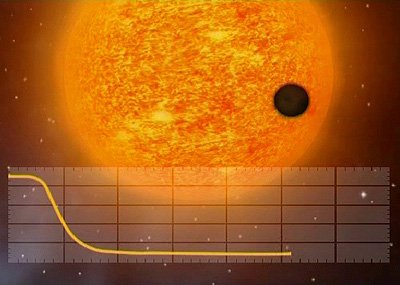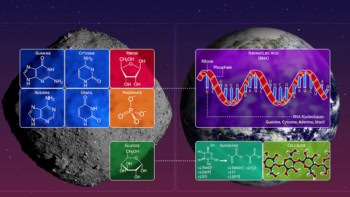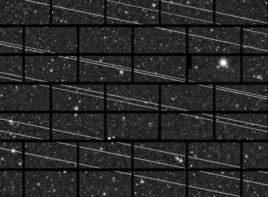
Astronomers using the CoRoT space telescope have found the smallest extrasolar planet to date. The planet, dubbed CoRoT-Exo-7b, is less than twice the radius of the Earth. It has a surface temperature of over 1000 degrees because it orbits extremely close to its parent star — and the exoplanet completes one orbit in just 20.5 hours.
Most of the 330 exoplanets discovered so far are gas giant planets that resemble Jupiter. Very few with masses comparable to Earth’s have been discovered because they are difficult to detect. CoRoT managed to identify such a small object because it is sensitive to a planet’s surface rather than just its mass — as in other methods to detect extrasolar planets, which detect the wobble of a star caused by an orbiting planet. CoRoT also orbits 900 km above Earth and can detect changes in star brightness as small as 0.01%, which is about 10 times better than the best ground-based telescopes.
The exoplanet circles a star about 400 light-years from Earth and was detected by measuring the slight dimming of a star each time an orbiting planet passes in front of it. Although the density of CoRoT-Exo-7b has not yet been determined, the scientists believe it might be a rocky object like Earth and covered with molten rock. It is therefore unlikely to harbour life as we know it on Earth.
Important milestone for planet hunters
The new result is an important milestone for planet hunters, according to Jean Schneider from the Laboratory Universe and Theories at the Paris Observatory, because recent measurements hinted at the existence of planets with small mass but their size had not been determined.
The discovery was also backed up with numerous follow-up measurements from the ground using telescopes and instruments like the VLT-ESO at Paranal, HARPS at La Silla and the Canada-France-Hawaii Telescope on Mauna Kea. Although scientists detected CoRoT-Exo-7b a year ago, they waited for the results from these complementary measurements before announcing their findings.
CoRoT was developed by the French Space Agency (CNES) at the Laboratory for Space Studies and Astrophysics Instrumentation (Paris Observatory), the Marseille Astrophysics Lab, the Institute of Space Astrophysics, Orsay (University of Paris 11) and the Midi Pyrenees Observatory, Toulouse. International partners included teams from Austria, Belgium, the European Space Agency, Germany, Spain and Brazil.
Star-shaking mission
CoRoT stands for “planetary convention, rotation and transits” and its goal is to search for exoplanets, and particularly those similar to Earth. It also detects and analyses star vibrations to determine star composition (also known as stellar seismology).
The work was presented at the first symposium dedicated to CoRoT, held in Paris from 2 to 5 February 2009. The work will be reported in an upcoming special issue of the journal Astronomy and Astrophysics.
CoRoT is the first step to finding Earth-like exoplanets and is a relatively small project that cost just €140m. It will be succeeded in time by KEPLER, a much more ambitious US mission with the same goals.



